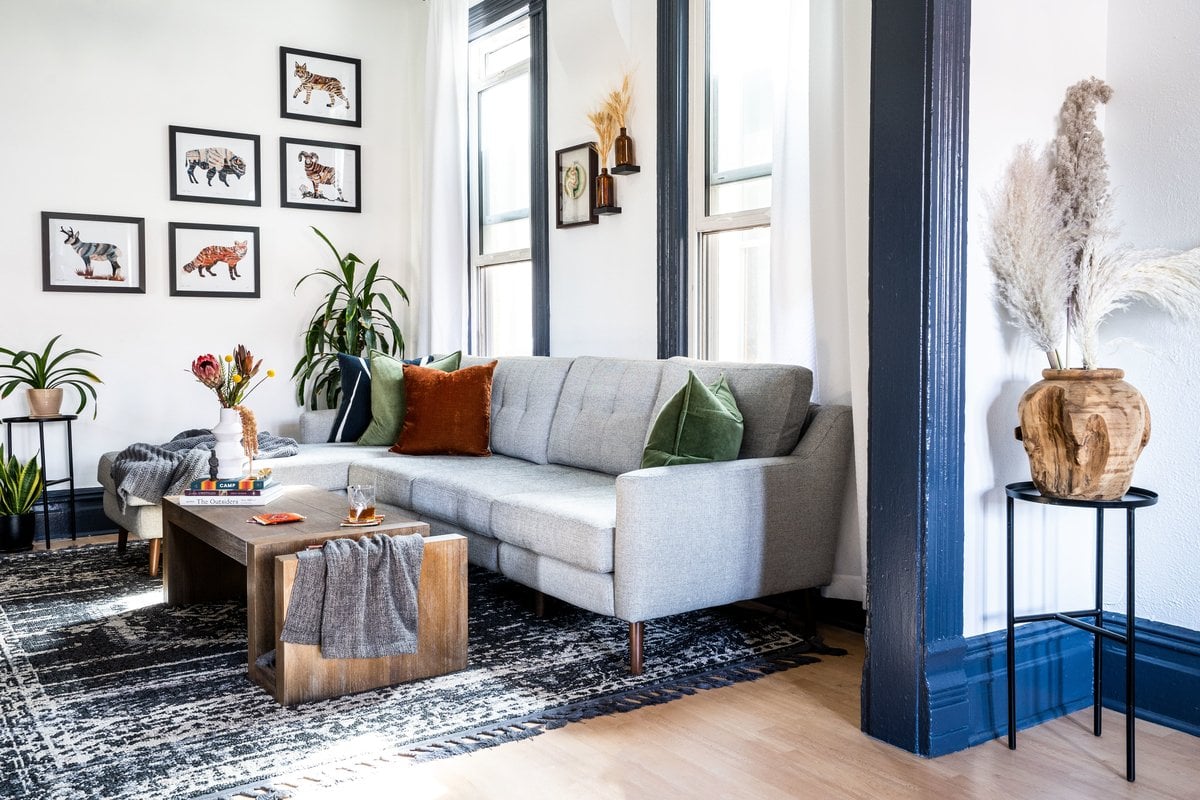Tiny living rooms can prove to be a big challenge when it comes to layouts. You want to maximize the space you have, but you don’t want to overcrowd and make the room look even smaller than it is. Short of knocking down a few walls or an expensive renovation, intentionally laying out your living room is the easiest way to make it look larger than it is.
Follow these five tips to make a big difference with the right layout for your small living room.
If you’re in a small open concept studio or multi-use space and want to create a designated living area, you’ll need to create a sense of division to designate the use of space. The easiest way to do this is through rugs. Have a rug that designates your “living room,” and place the majority of your furnishings on it. While it might be small in square footage, it will be clear in purpose, making the room more user-friendly.
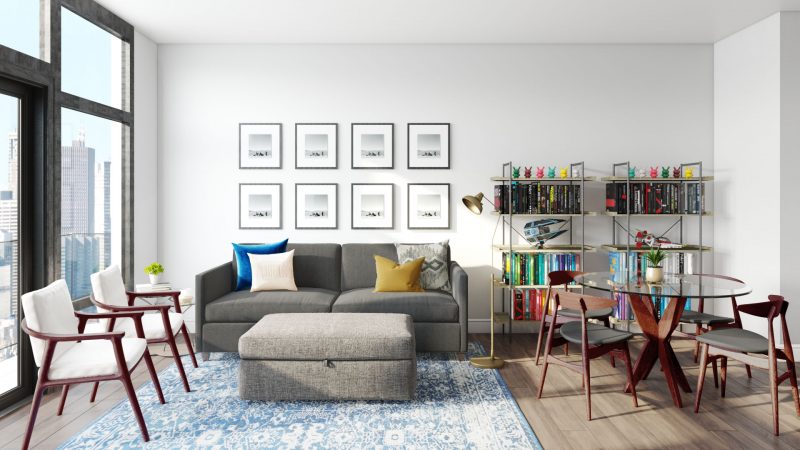
A large sectional plopped down in the middle of your living room will make the room look smaller. While not every furnishing has to be doll-sized, seeking out love seats, or “apartment” sized couches can save on space, while still having luxurious seating. Look for loveseats, or armless sofas—that can make the sofa look appear to look smaller and less dominating in the space. Often the largest piece of furniture in the living room, scaling down the sofa will leave you with more flexibility in planning the layout.
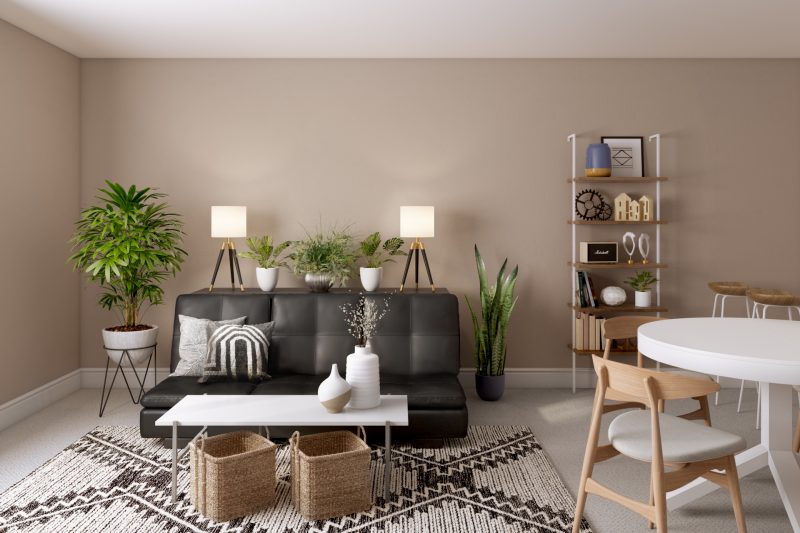
When space is limited in your living room, furnish it with objects that can serve a dual purpose in the space. Poufs are easily moveable and don’t take up too much space in a room. If you’re lounging on your own, you can use them as a footrest. But, if you’ve got company, they can easily become seating to accommodate visitors.

It’s not just tricks of furniture that will make a small living room appear larger, what you hang on the walls matters as well. Opt-out of the gallery wall trend, instead of going with one large piece of statement art. This keeps things from looking too busy, crowded, and cramped. It keeps the eyes from feeling cluttered when they look around a room.
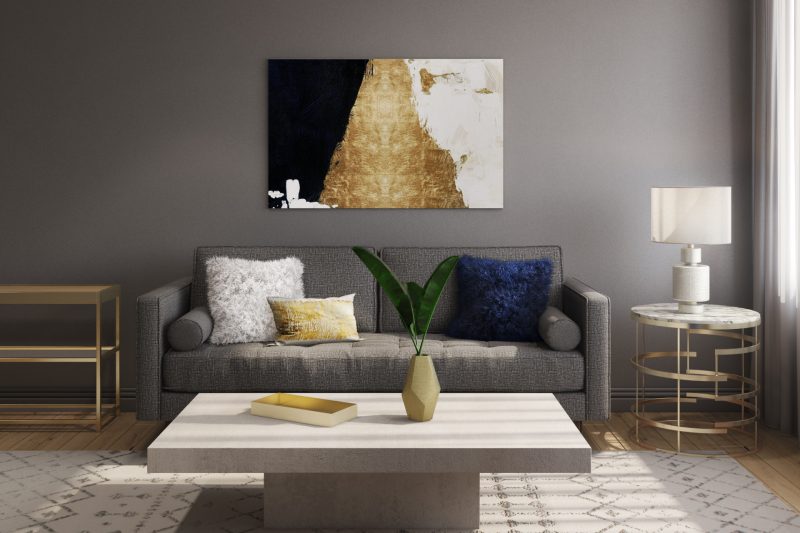
Drawing the eye upwards in a small space will make the ceilings feel higher, and the space more expansive. Using floating shelves, or tall shelves can create the illusion of height in the space.
You’ll also want to hang your window treatments higher than the height of the window, preferably 4-6 inches higher than the window frame. Using a rod that can extend 3-6 inches longer than the frame on both sides will also make the windows appear larger. This not only draws the eyes to the windows and outdoors, but it’ll make the ceilings look high and the room seem larger. A subtle vertical stripe pattern or fabric can also create the illusion of height and space.
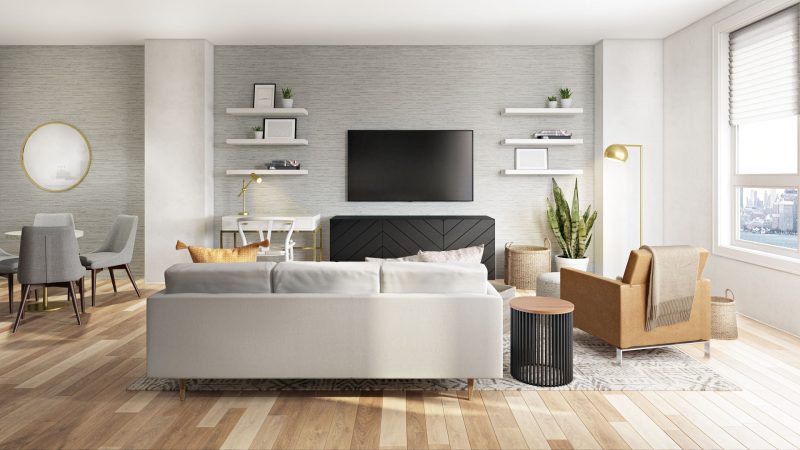
Small living rooms don’t need to be filled with small things to make them seem larger. You’ll just have to plan the room with intention and deploy a few visual tricks to make the room feel bigger than its true square footage. You don’t have to limit your mindset alongside the square footage. With some planning and intention, you can make the room feel so much larger.
Inspired to start redecorating? Take Havenly’s quiz to figure out what interior design style fits you!

